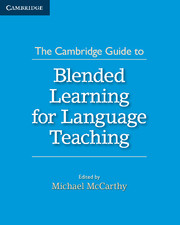Chapter 1 - Issues in Second Language Acquisition in Relation to Blended Learning
Published online by Cambridge University Press: 22 September 2021
Summary
INTRODUCTION
This chapter aims to forge links between what is often seen as the more theoretical and/or experimental tradition in applied linguistics and the practical concern of this book: how to combine the best of technology and the best of classroom practice in the environment of Blended Learning (BL) (see also King, Chapter 6, and McCarten and Sandiford, Chapter 12, this volume). The study of Second Language Acquisition (SLA) is a long-established field that has concerned itself with finding out as much as possible about how second languages are acquired, the underlying processes, the problems, the success or failure of encounters with the target language in natural settings or through pedagogical intervention, within the context of the learner. In the design and implementation of BL, the more we can utilise relevant insights from SLA and other sub-disciplines of applied linguistics, the more likely we are to construct the balance within BL programmes (as between class work and computer- mediated work) on firm foundations.
Within the realm of SLA, there is a considerable body of research into what happens in classrooms, how learners interact with their teachers and peers and how this underpins language learning. These considerations lead us to examine, on the one hand, what the prospects are for recreating the classroom-interactive world in a computer-mediated environment and, on the other, which aspects of classroom interaction are best left in the classroom. Additionally, technology has not only made BL possible in terms of learning platforms and computer-mediated language teaching but it has also enabled us to learn more about how language is used and how learners perform in the target language through different types of language corpora. It is the contention of the present chapter that SLA studies, classroom interaction studies and insights from corpus linguistics can assist us greatly in deciding the balance in BL between classroom activity and computermediated work.
In bringing in discussion of corpus linguistics, the present chapter acknowledges both the pros and cons of applying corpus information to language pedagogy (for further discussion, see McCarthy, 1998 ; O’Keeffe et al., 2007).
Information
- Type
- Chapter
- Information
- Publisher: Cambridge University PressPrint publication year: 2015
